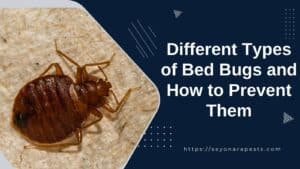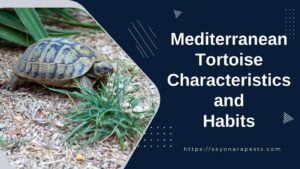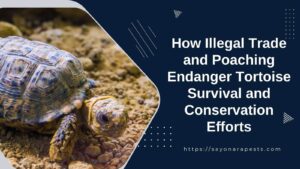The study of where tortoises live is a fascinating and complicated field that has caught the attention of both scientists and nature lovers.
With their unique traits and long history, these interesting creatures have spread to many different places around the world.
Understanding where tortoise species live is very important because it helps us learn more about their evolution, ecology, and how to protect them.
Researchers can figure out how tortoises and their environment are connected by studying the things that affect where they live and how they move around.
This article’s goal is to look into the complicated dynamics of tortoise distribution, shedding light on the different places they live and the things that affect how they are spread out.
Get ready to go on an adventure into the fascinating world of tortoises, where mysteries are waiting to be solved and knowledge is waiting to be shared.
Taxonomy and Diversity of Tortoises
Tortoises are interesting reptiles with hard shells and slow movements. They are made up of many different species that have caught the attention of both scientists and nature lovers.
To understand and appreciate the richness of this group, it is important to learn about the taxonomy and diversity of tortoises. This means learning about how they are grouped, their main families, and the amazing differences in their size, shape, and where they live.
Taxonomically speaking, tortoises belong to the order Testudines and the family Testudinidae, which has about 50 known species. Based on their appearance and where they live, these species are further divided into several genera, such as Testudo, Chelonoidis, and Geochelone.
Tortoise taxonomy is always changing as new research reveals species that were not known before and reevaluates existing classifications.
The main groups of tortoises include many different lines of evolution that have adapted to different environments and parts of the world. The Testudinidae is a well-known family. It includes the land tortoises that live in Africa, Asia, Europe, and the Americas.
The giant tortoises (Geochelone) are a notable subgroup of this family. They are known for their large size and ability to live on different islands in the Indian Ocean and the Galapagos archipelago.
The marine turtles, like the green turtle (Chelonia mydas) and the loggerhead turtle (Caretta caretta), belong to another important family called Cheloniidae. These turtles have special changes that help them live in water, and they also travel long distances.
The diversity of tortoises goes beyond how they are classified by taxonomy. It can be seen in their size, shape, and where they like to live. Tortoises come in a wide range of sizes. Some species are only a few inches long, while others can grow to be more than three feet long.
In the same way, the shells of tortoises come in many different shapes, from the high-domed shells of mountain tortoises to the flattened, long shells of desert tortoises.
These differences in size and shape often match the ecological niches that each species lives in, which gives them different advantages for survival.
Tortoises are also very different in how they like to live. Some species, like the African spurred tortoise (Centrochelys sulcata), live in dry areas and have adapted to survive in harsh desert conditions.
Other species, like the elongated tortoise (Indotestudo elongata), live in more humid areas, like the rainforests of Southeast Asia.
Some tortoises live mostly on land in grasslands, savannas, or forests, while others have partially or completely changed to live in freshwater or marine environments.
These differences in where they like to live add to the rich tapestry of diversity among tortoises and allow them to live and do well in a wide range of ecosystems around the world.
Therefore, the taxonomy and diversity of tortoises give us a fascinating look at how these reptiles have changed over time and how they can live in many different environments.
Through their taxonomic classification, which includes families like Testudinidae and Cheloniidae, we can learn about how they have changed over time and where they live. Also, the size, shape, and habitat preferences of tortoises show how different they are.
These adaptations have helped them do well in many different ecological niches. From huge tortoises that live on islands to fast-moving marine turtles that live in the water, the world of tortoises is full of interesting species, each with its own unique traits and contributions to the natural world.
Distribution of Tortoises
Tortoises are a fascinating group of reptiles that are found in many different places around the world. Their range is affected by many things, like climate, geology, and other living things, which all play important roles in shaping their habitats.
Understanding where tortoises live gives us clues about how these ancient animals have changed over time and help guide efforts to protect their populations.
Climate patterns have a lot to do with where tortoises live. Most of the time, these reptiles live in warm areas because they are ectothermic and need heat from the outside to keep their bodies at the right temperature.
They do best in places where they can bask in the sun and soak up the heat they need. Because of this, tortoises are more likely to live in tropical and subtropical areas, where the weather is good for them. But some species have changed so that they can live in dry deserts or even in colder places.
The geology of a place is also a big factor in where tortoises live. The type of terrain and substrate in an area can have a big effect on how well they can find places to live.
Tortoises live in many different kinds of landscapes, like rocky outcrops, lowland forests, grasslands, and even coastal areas. Tortoises also need safe places to hide, like burrows or cracks in rocks, so they can avoid being eaten by animals or getting hurt by bad weather.
Tortoises live in different places because of things like competition and being eaten by other animals. Tortoise populations may be limited in some areas by the presence of animals that eat them.
For example, large mammals or reptiles that eat meat may try to eat tortoises in some areas. On the other hand, when tortoise populations live in places where there are no predators, they can grow and spread.
Also, competition for resources like food and places to nest may affect where tortoises live, leading to niche differentiation and the coexistence of species.
When talking about important places for tortoises, the Galapagos Islands are the first ones that come to mind. These volcanic islands in the Pacific Ocean are known for the many different kinds of tortoises that live there.
Charles Darwin’s theory of evolution was greatly influenced by the Galapagos giant tortoises, which are known for their huge size and long lives.
Tortoises on these islands are a great example of adaptive radiation because they have changed the shape and size of their shells to fill different ecological niches.
Madagascar is also a great place to see tortoises because it has so many species that only live there. Because the island is separated from the rest of Africa, many tortoise species that can’t be found anywhere else on Earth have developed.
Tortoises in Madagascar live in a wide range of environments, from dry, thorny forests to lush, green rainforests. Many of these species are in danger because their habitats are being destroyed and they are being sold illegally.
Southeast Asia also has a lot of places where tortoises like to live, such as Indonesia, Malaysia, and Thailand. There are many different kinds of tortoises in these areas. Most of them live in tropical rainforests and along the coast.
Some of the most well-known species in this area are the Southeast Asian box turtle and the Malayan giant turtle. But habitat loss and the illegal pet trade are big problems that make it hard to save them.
There are also places in North America where tortoises are very common, especially in the southwestern United States and northern Mexico.
There are many kinds of tortoises in the Sonoran Desert, Mojave Desert, and Chihuahuan Desert. One of the most famous is the desert tortoise.
Tortoises in these dry places have to deal with things like extreme heat, a lack of water, and animals like coyotes and ravens that try to eat them. In this area, conservation efforts focus on protecting important habitats and reducing the damage caused by people.
In the end, the distribution of tortoises is affected by many things, such as climate, geology, and other living things. Understanding these factors is important if you want to know how different tortoise species move around and how to protect them.
Tortoise hotspots like the Galapagos Islands, Madagascar, Southeast Asia, and North America show how different tortoises are and how well they have adapted to their environments.
To make sure that these unique reptiles will be around for future generations, it is important to protect their habitats and spread information about how to protect them.
Adaptability of Tortoises
Tortoises are amazing animals that are known for how well they can adapt to different environments.
Through changes to their bodies, their bodies’ functions, and their behavior, these reptiles have learned to live in many different places around the world. Their ability to live in dry deserts, lush forests, and even remote islands shows how well they can adapt.
The shell that tortoises have is what makes them different from other reptiles from a physical point of view. The shell, which is made up of the carapace and the plastron, protects them from predators and gives them structure.
The shape and size of the shell can vary from species to species. Some tortoises have dome-shaped shells for extra protection, while others have flat shells that make them easier to move around in water or forests.
Tortoises have changed in many ways in their bodies to help them live in different places. Their metabolism is an important change. Tortoises have a slow metabolism, which lets them live in places with little food and water.
Because this strategy uses little energy, they can go for long periods without food. This makes them well-suited to live in arid areas where food is scarce.
Tortoises also have very good kidneys that help them save water by making them pee out their concentrated urine. This makes it even easier for them to live in dry places.
Tortoises also have a digestive system that is specially designed for the different foods they eat. Most tortoises are herbivores, which means they eat plant matter.
Their digestive system and gut bacteria help them break down tough plant fibers and get nutrients from foods that are high in cellulose.
Some tortoise species, like the Galapagos tortoise, have even learned to eat cacti, which usually don’t have much in the way of nutrition. Because they can change what they eat, tortoises can get food from any source, no matter how nutritious or scarce it is.
In addition to their physical and physiological adaptations, tortoises have also developed some amazing behavioral adaptations that help them live in harsh environments. One of these changes is hibernation, which is often seen in tortoises that live in temperate areas.
As winter temperatures drop, tortoises go into a state called “dormancy,” which slows down their metabolism and helps them save energy. This helps them survive in harsh conditions, like when food is hard to find and the weather is too cold to be active.
Aestivation is another change in behavior that tortoises who live in hot, dry places do. Tortoises go into a state called aestivation, which is similar to hibernation when it is very hot or dry.
By digging holes in the ground or looking for shelter in cool, shady places, they keep from losing water and slow down, which helps them avoid the bad effects of high temperatures and lack of water.
Some species of tortoise also change their behavior by moving from one place to another. Some tortoises travel long distances to find good homes or places to have babies.
For example, the giant tortoises of the Galapagos Islands move between places to eat and places to lay eggs.
They do this over long distances and difficult terrain. This ability to move long distances in search of food helps them stay alive and keeps their populations genetically diverse.
In this regard, the fact that tortoises can change shows how well they have evolved. Through physical, physiological, and behavioral changes, these reptiles have been able to live in many different places around the world.
Their special shell, fast metabolism, specialized digestive system, and behaviors like hibernation, aestivation, and migration help them do well in places like dry deserts, dense forests, and other tough environments.
Tortoises are a great example of how amazing it is that living things can survive and even thrive in environments that change all the time.
Human Impacts on Tortoise Distribution and Adaptability
As human civilization spreads, it has brought many dangers that have hurt tortoise populations all over the world. Understanding these effects is important for coming up with effective ways to protect these ancient animals and their fragile ecosystems.
Loss of habitat is one of the main problems that tortoise populations face. Their natural habitats have been destroyed and broken up by human activities like building cities, expanding farms, and building roads and bridges.
As large areas of land are cleared for human needs, tortoises lose important things like food, shelter, and places to lay eggs. This makes it very hard for them to survive.
Fragmentation separates tortoise populations even more, which makes them less resistant to diseases and other environmental pressures and less diverse genetically.
Climate change is another big problem for tortoises and their ability to change. The delicate balance of their ecosystems is upset by things like rising temperatures, changing patterns of rainfall, and extreme weather events.
Tortoises are ectothermic, which means that their body temperature is controlled by their environment. But as temperatures rise, they have trouble keeping their bodies at the right temperature, which affects their metabolism, ability to reproduce, and health as a whole.
Changes in the way it rains can also change the types of plants that grow, making it harder for tortoises to find food. When these things happen together, it can make tortoise populations less healthy and increase the number of deaths.
Tortoise populations are also going down because people use them too much. Tortoises have been hunted in the past for their meat, eggs, and shells, which were thought to have medicinal or aesthetic value.
Tortoise populations have dropped by a lot, especially in places where they live naturally or have a lot of commercial value. Also, the illegal pet trade has been a major cause of tortoise exploitation, since collectors want rare and endangered species.
Many tortoise species are already in danger, but these unsustainable practices make it worse, bringing them closer to extinction.
Several conservation measures have been put in place to protect tortoises and their habitats from these dangers. Setting up protected areas is a very important part of keeping tortoise populations and their ecosystems alive.
These areas provide legal protections against habitat destruction and a safe place for tortoises to live and grow without being bothered. There are also programs to breed tortoises in captivity. These programs try to increase population sizes and genetic diversity.
These programs create backup populations and may be able to put some animals back into the wild when conditions are right.
Education and outreach are important ways to show people how important tortoises are and why they need to be protected.
By helping people understand the importance of tortoises to the environment, their role as keystone species, and how human activities hurt the environment, these programs encourage people to use sustainable practices and act responsibly.
They also encourage a sense of stewardship, which motivates people and communities to take part in conservation efforts like restoring habitats and keeping an eye on them.
Ultimately, people have had a big effect on where tortoises live and how well they can adapt, which has caused them a lot of trouble. Loss of habitat, changes in climate, and too much use of their resources are all big problems for their survival.
But there is hope for the long-term survival of tortoises and their habitats if conservation measures like protected areas, breeding programs in zoos, and education and outreach programs are put into place.
It is very important that society understands how important these efforts are and takes steps to reduce the negative effects that humans have on these amazing creatures.
Physiological and Ecological Adaptations of Tortoises
Tortoises are fascinating animals that are known for moving slowly and steadily. They have made amazing changes to their bodies and environments that help them survive in many different places.
These changes are very important to their survival and allow them to live and do well in a wide range of environments, from deserts to grasslands to forests.
The amazing way tortoises control their body temperature is one of the most important ways they have adapted to their environment. Tortoises are ectothermic, which means that their body temperature is controlled by heat from the outside.
They change the way they act, like lying in the sun to get warm and going into the shade or a burrow to cool off. By changing where they stand and how they face the sun, they are able to control their body temperature and make the most of their metabolic processes.
Tortoises can handle extreme temperature changes because they can change their body temperature in response to their surroundings. This is especially important in harsh desert environments or places with changing weather patterns.
Also, tortoises have come up with amazing ways to save water so they can live in dry places where water is scarce. Their unique urinary system is the main reason why they can hold onto water.
Tortoises have kidneys that are very good at concentrating urine, which lets them get the most water out of their waste. Also, their cloacal bursae are designed to re-absorb water from the bladder before it leaves the body.
These changes help tortoises lose less water, so they can stay hydrated and live even in places where water is scarce.
In terms of ecological adaptations, tortoises interact with many different species in their ecosystems and play important roles as both herbivores and seed spreaders.
Tortoises are herbivores, so they help the cycle of nutrients by eating plants and transferring nutrients through their digestive systems. Their grazing shapes plant communities and changes the way plants grow, which affects the types and numbers of plants in their habitats.
Also, tortoises are good at spreading seeds because they eat fruit and let the seeds pass through their bodies. This way of spreading helps plants move into new areas, which makes ecosystems stronger and more diverse.
Tortoises also have relationships with other species that benefit both of them. For example, some tortoises get along well with birds that are called “cleaners.”
These birds clean the tortoises’ shells of parasites and dead skin, which is good for both the tortoises and the birds. The birds get food, and the tortoises get rid of parasites that could be harmful, which is good for their overall health and well-being.
In a nutshell, tortoises have amazing physical and environmental adaptations that help them do well in many different places.
Their thermoregulatory systems let them match their body temperature to the temperature of their environment, and their ways of saving water help them live in dry areas.
Tortoises also play important roles in their ecosystems as herbivores, animals that spread seeds, and members of mutualistic relationships.
Understanding these changes shows how complex and changing the relationship between tortoises and their environments is. It also shows how diverse and tough these fascinating animals are.
Geographic Variation in Tortoises
Different parts of the world have different tortoise patterns that are very interesting. This difference can be seen in both the way they look and how their genes are put together.
Researchers have found interesting differences between tortoise populations from different parts of the world. These differences show how evolution, environmental factors, and historical events all work together.
Different populations of tortoises are different sizes, have different shell shapes, and have different colors. For example, tortoises that live in dry areas often have a dome-shaped shell with a light color.
This helps them stay cool and hide in the desert. Tortoises that live in forests, on the other hand, may have a flatter shell and darker color, which helps them move through thick vegetation.
These changes in shape are the result of natural selection acting on populations over time as they change to meet the ecological needs of their own habitats.
Tortoise populations also have different genetic patterns. Genetic studies have shown that allele frequencies and genetic diversity are different between populations that live in different parts of the world.
Different things, such as genetic drift, natural selection, and gene flow, can lead to these genetic differences. Due to limited gene flow and more genetic drift, genetic differences can happen in populations that are separated by things like mountain ranges or bodies of water.
Because of this, these populations may develop their own genetic signatures, which adds to the fact that tortoises live in different places.
Tortoises can be found in different places because of a number of things. First of all, geographic barriers are a very important part of how genetic and physical differences between populations are made.
Some of these barriers are mountain ranges, rivers, deserts, or even long stretches of unsuitable habitat that keep tortoises from moving around freely.
Because of these barriers, genes can’t move as easily from one population to another, which leads to population isolation and, in the end, genetic differentiation.
Over time, genetic and physical changes happen in these isolated populations, which adds to the geographic variation that can be seen.
History also affects how different tortoises live in different places. Over millions of years, the distribution of tortoise populations has been shaped by the movement of land masses, changes in climate, and the growth of new habitats.
For example, during periods of glaciation, the sea level dropped. This made land bridges possible, which helped tortoises move between areas that had been separated.
After that, warming periods and rising sea levels may have separated populations that used to live together, causing their genes to become more different.
Tortoises today live in many different places because of how historical events and the changes they caused to habitats have interacted with each other.
Understanding how tortoises vary by location is important for conservation efforts and studies of evolution.
Scientists can learn more about how these species can adapt and how well they can deal with changes in their environment by looking at the physical and genetic differences between populations.
Studying the things that cause geographic variation is also a good way to learn about the processes that shape biodiversity and where species live.
With this information, effective conservation plans can be made to help these amazing creatures stay alive in a world that is changing quickly.
In conclusion, the geographic distribution of tortoises is an interesting topic that shows how they can adapt and how they have changed over time.
This article has given a broad look at many different things about tortoises, such as their taxonomy and diversity, distribution patterns, adaptability, human impacts, physiological and ecological adaptations, geographic differences, and ways to protect them.
It is very important to study where tortoises live for a number of reasons. First, it helps us learn about the things like climate, geology, and interactions between living things that affect where they live.
By looking at where tortoises live, scientists can learn a lot about the ecological processes that cause species to be present or absent in different areas.
Tortoises are very good at changing according to their surroundings, which helps them live in many different places.
Their adaptations include their unique shell shape, metabolism, and digestive system, as well as hibernation, aestivation, and migration, which are changes in their behavior. These changes help tortoises deal with their environment and make sure they can live in different places.
Unfortunately, people have had a big effect on where tortoises live and how well they can adapt. Several species of tortoise are very close to going extinct because of big problems like habitat loss, climate change, and overhunting.
Tortoises and their habitats need to be protected through conservation efforts like setting up protected areas, breeding programs in captivity, and education and outreach programs.
By doing something about these things, we can protect the important ecological roles that tortoises play in their ecosystems.
Tortoises have amazing biological and environmental adaptations that help them live well in their environments. These changes include ways to deal with changes in temperature and ways to save water so that they can live in places that are dry.
Also, tortoises interact with other species in their ecosystems. They help spread seeds and move nutrients around, which are both important jobs.
Different populations of tortoises in different parts of the world look different and have different genes, which is an interesting thing to see. This difference is caused by things like geographic barriers and historical biogeography.
Scientists can learn more about how tortoises have changed over time by looking at the differences between them.
Simply put, where tortoises live tells us a lot about how well they can adapt, how they have changed over time, and what role they play in the environment.
We need to do more research to learn more about these amazing creatures and come up with good ways to protect them. Tortoises are not only important for the health of ecosystems, but they are also important in many cultures.
So, protecting and preserving tortoises is not only important for the environment, but it is also part of our shared natural heritage and our responsibility.











